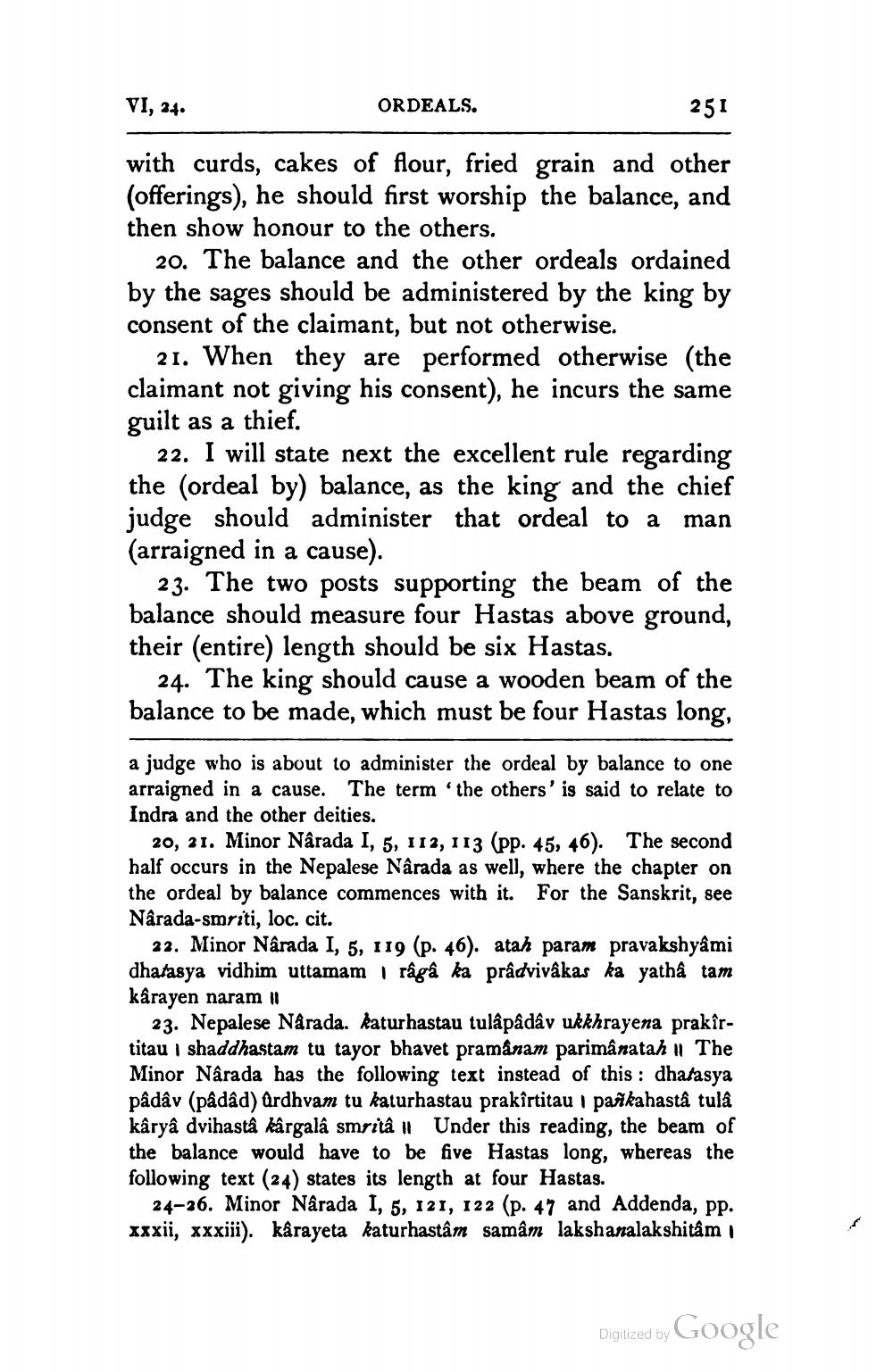________________
VI, 24.
ORDEALS.
251
with curds, cakes of flour, fried grain and other (offerings), he should first worship the balance, and then show honour to the others.
20. The balance and the other ordeals ordained by the sages should be administered by the king by consent of the claimant, but not otherwise.
21. When they are performed otherwise (the claimant not giving his consent), he incurs the same guilt as a thief.
22. I will state next the excellent rule regarding the (ordeal by) balance, as the king and the chief judge should administer that ordeal to a man (arraigned in a cause).
23. The two posts supporting the beam of the balance should measure four Hastas above ground, their (entire) length should be six Hastas.
24. The king should cause a wooden beam of the balance to be made, which must be four Hastas long,
a judge who is about to administer the ordeal by balance to one arraigned in a cause. The term 'the others' is said to relate to Indra and the other deities.
20, 21. Minor Narada I, 5, 112, 113 (pp. 45, 46). The second half occurs in the Nepalese Narada as well, where the chapter on the ordeal by balance commences with it. For the Sanskrit, see Nárada-smriti, loc. cit.
22. Minor Narada I, 5, 119 (p. 46). atah param pravakshyami dhatasya vidhim uttamam | râga ka prâdvivâkas ka yatha tam kârayen naram 11
23. Nepalese Narada. katurhastau tulâpâdâv ukkhrayena prakîrtitau shaddhastam tu tayor bhavet pramânam parimânatah | The Minor Narada has the following text instead of this : dhatasya pâdâv (pâdâd) ardhvam tu katurhastau prakîrtitau I paskahastâ tulâ kâryâ dvihastâ kârgalâ smrità Hl Under this reading, the beam of the balance would have to be five Hastas long, whereas the following text (24) states its length at four Hastas.
24-26. Minor Narada I, 5, 121, 122 (p. 47 and Addenda, pp. xxxii, xxxiii). kârayeta katurhastâm samam lakshanalakshitâm
Digitized by Google




